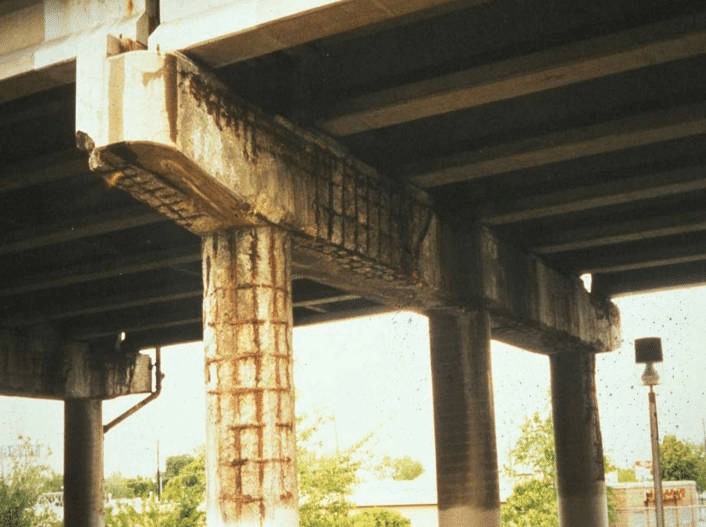GFRP rebar isn’t just a game-changer in construction; it’s a beacon of hope against the hidden costs of corrosion, saving both your wallet and the world from the silent decay of concrete cancer.
Ever heard of “concrete cancer”?
Not quite as scary as it sounds, but this is a real condition that can, quite literally, be eating away at the foundation of your structures. We’re talking about corrosion — specifically the rusting of the internal steel reinforcement within concrete due to exposure to moisture and oxygen. The results are not just a little rust; they’re about safety risks, financial strain, and the environment.
The Financial Burden of Corrosion
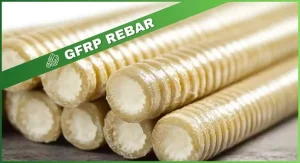
Corrosion is not a minor nuisance but a costly one. Consider this: each corrosion point means thousands of dollars in maintenance, repair work, and replacements. These costs are not only one-off in nature but accumulate over the lifetime of a structure, placing constant stress on resources.
- Ongoing Maintenance: Regular checks, repairs, and replacements involve continuous outlays of financial resources. The total cost of corrosion worldwide has been estimated to be around $2.5 trillion per year, which comes out to around 3.4% of the global GDP. To put things into a perspective, this amount is equivalent to the GDP of big economies like India or Italy.
- Early Replacements: At times, a building has to be replaced in entirety than anticipated. This is because steel reinforcement corrodes prematurely, thus resulting in 30% of the original cost of construction. With the right materials, all this could have been avoided.
Crumbling Integrity: The Structural Impact
When steel reinforcement corrodes, its strength is lost. This may cause cracks and fractures in the concrete surrounding it. It’s not a cosmetic problem; it’s a threat to the stability of the entire structure.
- Compromised Safety: Rusted reinforcement means that buildings and bridges may collapse at any time, thus posing critical safety threats to anyone inside or around them.
The Environmental Toll
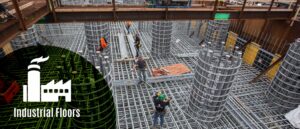
It is not only costly to replace rusted structures. The replacement of rusted structures has environmental costs, too. The entire process produces waste, consumes resources, and leaves a greater carbon footprint.
- Increased Waste: Every repair or replacement contributes to the environmental burden as it consumes more materials and produces more waste.
GFRP Rebar: The Modern Solution
So how do we take on this silent enemy? Come, then, Glass Fiber Reinforced Polymer (GFRP) rebar, a new solution in tackling the weaknesses of old, rusty steel reinforcement.
Corrosion Resistance
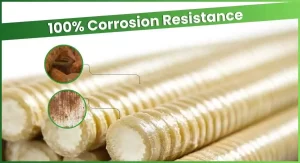
GFRP rebar does not rust, not even under the harshest conditions. Whether you construct by saltwater or moist areas, GFRP endures where steel will fail.
Durability
One of the GFRP’s most outstanding characteristics is durability. It outlasts steel, so less repair and replacement work over the lifetime of a structure, and more money saved in your pocket.
Lightweight and Strong
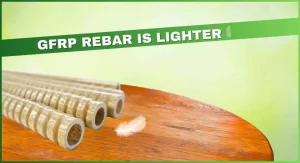
Imagine working with a material that is only a quarter of the weight of steel but has double the strength. GFRP rebar makes transporting and installation easier while increasing the overall strength of your structures at work.
Easy Handling and Installation
Since GFRP rebar is lightweight, handling and installation are easier. It is not only faster to construction but labor and equipment cost is reduced as well.
Non-Magnetic and Non-Conductive
In case of magnetic interference and conductivity becoming a problem—whether in a health care center or when dealing with sensitive machinery—GFRP rebar is the best.
Conclusion: The Future of Construction
The construction industry is complex, with numerous factors to consider, from materials to budget to safety. While steel has been a long-standing choice for reinforcement, it comes with significant drawbacks, especially when it comes to corrosion. GFRP rebar offers a forward-looking alternative—one that’s not only cost-effective but also environmentally friendly and structurally superior. As the industry evolves, embracing innovative materials like GFRP could be the key to building stronger, more durable, and sustainable structures.

